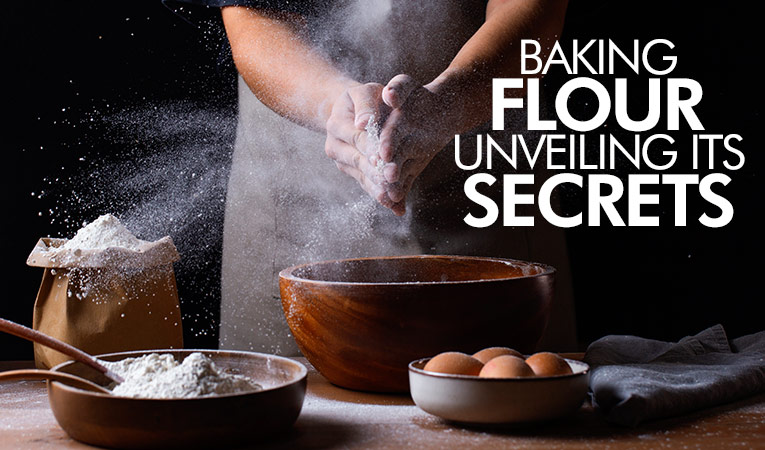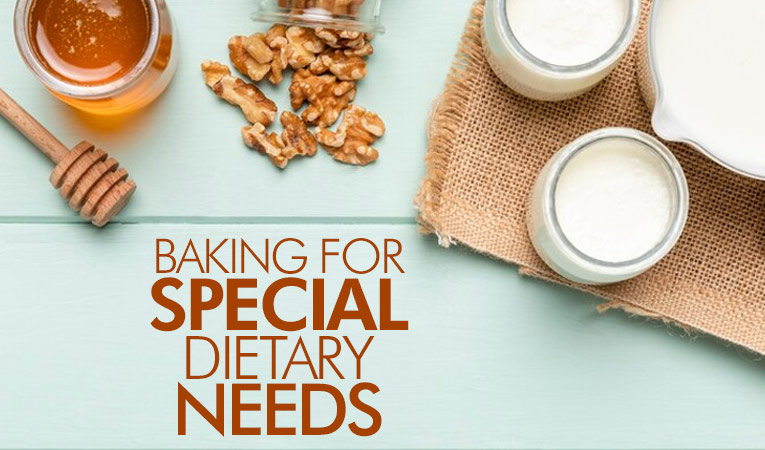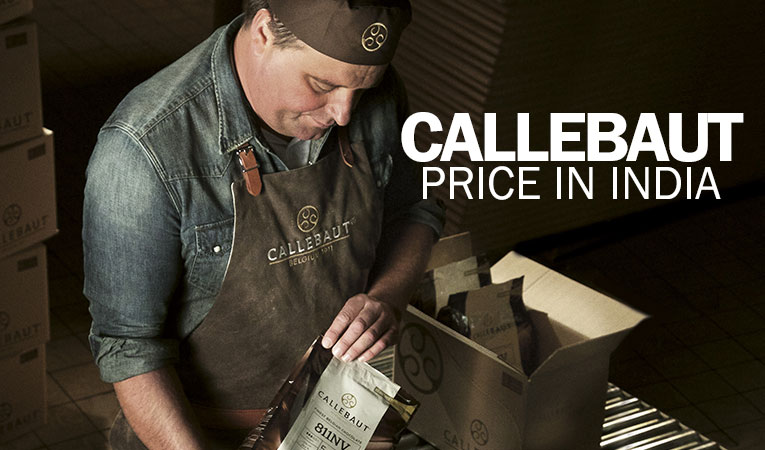Baking Flour : Unveiling Its Secrets
28-05-2023

Baking flour is a fundamental ingredient in the world of baking, playing a crucial role in creating the perfect texture, structure, and flavor in your baked goods. Understanding the secrets behind different types of baking flour and how they interact with other ingredients is essential for achieving consistent and delicious results. In this comprehensive guide, we will delve into the fascinating world of baking flour, exploring its various types, protein content, and the vital role it plays in your recipes. By uncovering the recipe secrets of baking flour, you'll be equipped with the knowledge to elevate your baking skills and create mouthwatering treats for all to enjoy.
Types of Baking Flour:
In this section, we will explore the different types of baking flour and their specific characteristics:
-
All-Purpose Flour: All-purpose flour is a versatile option suitable for a wide range of recipes. It typically has a moderate protein content, usually ranging from 9% to 12%. This level of protein creates a balanced amount of gluten, resulting in baked goods with a tender crumb and moderate rise.
-
Bread Flour: As the name suggests, bread flour is specifically formulated for yeast-based bread recipes. It has a higher protein content, usually around 12% to 14%. The increased protein creates a stronger gluten structure, allowing bread dough to rise and develop a chewy and airy texture.
-
Cake Flour: Cake flour is finely milled and has a lower protein content, usually around 7% to 9%. The reduced protein results in a tender and delicate texture, making it ideal for delicate cakes, pastries, and cookies. The lower gluten formation helps prevent a dense or tough crumb.
-
Whole Wheat Flour: Whole wheat flour is made from the entire wheat kernel, including the bran, germ, and endosperm. It has a higher protein content compared to all-purpose flour, typically around 14% to 15%. The higher protein and fiber content of whole wheat flour contribute to a denser texture and nuttier flavor in baked goods.
The Importance of Flour Protein Content:
- Gluten Development: Protein content in flour is directly linked to the formation of gluten, a network of proteins that gives structure and elasticity to baked goods. The higher the protein content, the more gluten is formed.
- Texture and Structure: The protein content in flour plays a vital role in determining the texture and structure of baked goods. Higher protein content leads to a denser and chewier texture, while lower protein content results in a softer and more tender crumb.
- Desired Outcome: Selecting the appropriate flour with the desired protein content is essential to achieve the desired outcome in your baked creations. For example, if you're aiming for a soft and fluffy cake, a flour with lower protein content, such as cake flour, would be more suitable. On the other hand, for a hearty loaf of bread, a higher protein flour like bread flour is preferred.
- Gluten Strength: The protein content affects the strength of gluten formation. Higher protein flours, like bread flour, create stronger gluten structures, allowing bread dough to rise and develop a chewy and airy texture. Lower protein flours, like cake flour, produce weaker gluten, resulting in a more delicate and tender crumb.
- Baking Flexibility: Understanding flour protein content gives you the flexibility to experiment and adjust your recipes. By choosing flours with different protein contents, you can achieve various textures, flavors, and structures in your baked goods.
By considering the protein content of flour and selecting the appropriate type for your specific baking needs, you can take control of the texture, structure, and overall quality of your baked creations. Experiment with different flours and embrace the endless possibilities that flour protein content brings to your baking journey.
The Role of Flour in Baking:
In the world of baking, flour plays a vital role in determining the success of your recipes. Let's explore the various aspects of flour and its significance in creating delightful baked goods:
- Texture and Structure: One of the primary functions of flour is to contribute to the texture and structure of your baked creations. Different types of flour, such as all-purpose, bread flour, or cake flour, have varying protein contents, which directly influence the gluten development. Higher protein flours, like bread flour, create stronger gluten structures, resulting in a chewier and more substantial texture. On the other hand, lower protein flours, like cake flour, produce a softer and more delicate crumb. Understanding the characteristics of different flours allows you to achieve the desired texture in your baked goods.
- Flavor and Color: The type of flour you choose can significantly impact the flavor and color of your baked treats. Whole wheat flour adds a nutty and robust flavor, while almond flour imparts a subtle almond taste. Additionally, some flours, like rye or buckwheat, can lend unique flavors to bread and pastries. Furthermore, certain flours, like bleached or unbleached all-purpose flour, may affect the color of your baked goods, giving them a lighter or darker appearance. Exploring different flours opens up a world of flavor possibilities in your baking endeavors.
- Gluten Development: Gluten, a protein composite formed when flour combines with liquid, is responsible for creating the elasticity and structure in bread and other baked goods. When the proteins in flour (glutenin and gliadin) come into contact with water, they form gluten strands. The gluten network traps carbon dioxide produced by yeast or leavening agents, allowing the dough to rise and giving baked goods their characteristic texture. Understanding how gluten develops and the impact it has on your recipes enables you to manipulate it to achieve the desired results.
By comprehending the role of flour in baking, including its impact on texture, flavor, and gluten development, you can make informed decisions when selecting the appropriate flour for your recipes. Experiment with different types of flour to discover new flavors, textures, and creative possibilities in your baking adventures. Mastering the art of flour selection will empower you to create delectable baked goods that are both visually appealing and delightfully satisfying.
The Interaction of Baking Flour with Other Ingredients:
Understanding how baking flour interacts with other ingredients is essential for successful baking. Here are key points to consider:
- Moisture Absorption: Flour absorbs moisture from other ingredients, affecting the texture and structure of baked goods. The amount of liquid added must be balanced to achieve the desired consistency.
- Leavening Agents: Baking powder and baking soda react with acidic or alkaline ingredients in the recipe. The type of flour used can influence the leavening process, affecting the rise and texture of the final product.
- Fat Incorporation: Fat, such as butter or oil, coats flour particles, reducing gluten formation. This results in tender and delicate baked goods like cakes and pastries. The ratio of fat to flour impacts the final texture.
- Sweeteners and Flavorings: Sugar and other sweeteners add sweetness and moisture to baked goods. They also play a role in browning and caramelization during baking. Flavored extracts or spices complement the overall flavor profile.
- Binding and Thickening: Flour plays a vital role as a binder, creating cohesion and structure in recipes. Its ability to absorb liquid and form a gel-like consistency when cooked makes it an excellent thickening agent for sauces, gravies, and fillings, providing a satisfying texture and mouthfeel to your dishes.
- Recipe Adaptation: Different types of flour have distinct properties, such as all-purpose, bread, cake, or gluten-free flours. Understanding their characteristics allows for proper recipe adaptation and achieving desired results.
- Ingredient Ratios: The ratio of flour to other ingredients affects the overall structure, texture, and flavor of the baked goods. Balancing the quantities is crucial to maintain the intended outcome.
Understanding how baking flour interacts with other ingredients empowers you to make informed choices and achieve delightful results in your baking endeavors.
Tips and Tricks for Using Baking Flour:
Baking flour is a key ingredient in countless recipes, and knowing how to use it effectively can greatly enhance your baking results. Here are some valuable tips and tricks to help you make the most of your baking flour:
- Proper Measurement Techniques: Accurate measurement of flour is essential for consistent results. Use the scoop and level method by gently spooning flour into the measuring cup and leveling off the excess with a straight edge. Alternatively, invest in a kitchen scale for precise measurements, as weight-based measurements are more reliable.
- Sifting and Aerating Flour: Sifting flour helps to remove any lumps or impurities and aerates it, resulting in lighter and more evenly distributed flour in your recipes. Use a fine-mesh sieve or a flour sifter to achieve a smoother texture and better incorporation of flour into your batters and doughs.
- Flour Substitutions: There may be instances where you need to substitute flour due to dietary restrictions or ingredient availability. Familiarize yourself with suitable alternatives like whole wheat flour, gluten-free flour blends, almond flour, or coconut flour. Understand the unique properties of each substitute and make adjustments to your recipes accordingly.
- Storing and Shelf Life of Baking Flour: Proper storage techniques are crucial for maintaining the freshness and quality of your baking flour. Store it in airtight containers in a cool, dry place, away from moisture, heat, and sunlight. Be mindful of the shelf life of different flours, as they can vary. Whole grain flours have a shorter shelf life due to their higher oil content, while refined flours generally have a longer shelf life.
- Common Flour-Related Mistakes to Avoid: Beginners often make common mistakes when working with baking flour. Some examples include using compacted flour when measuring, overmixing the batter, or not properly preheating the oven. To overcome these challenges, follow proper measurement techniques, handle the batter with care, and ensure your oven is at the correct temperature for optimal results.
- Specialty Flours and Alternative Options: Explore the world of specialty flours to add unique flavors and textures to your baked goods. Rye flour, almond flour, coconut flour, and other alternative flours offer exciting possibilities. Additionally, for individuals with dietary restrictions, gluten-free flour options like rice flour, tapioca flour, or chickpea flour can be used as alternatives.
- Troubleshooting Flour-Related Issues: Even experienced bakers encounter issues when working with flour. Dense cakes, dry textures, or excessive spreading can occur. To troubleshoot these problems, ensure proper measuring techniques, adjust the liquid-to-flour ratio if needed, monitor baking time and temperature, and follow recipes and instructions carefully.
By applying these tips and tricks when using baking flour, you'll enhance your baking skills and achieve consistent, delicious results. Remember to experiment, have fun, and embrace the versatility of flour in your culinary creations. Happy baking!
Conclusion:
Baking flour is the foundation of successful baking, and understanding its secrets will empower you to create exceptional treats in your own kitchen. By exploring the different types of flour, their protein content, and the role they play in your recipes, you can confidently experiment, adapt, and create a wide array of baked goods. We hope this blog has provided you with valuable insights and inspired you to embark on new baking adventures. Share your baking experiences and creations with us by commenting below or tagging us on Instagram and Facebook @bakerykart. Happy baking!





